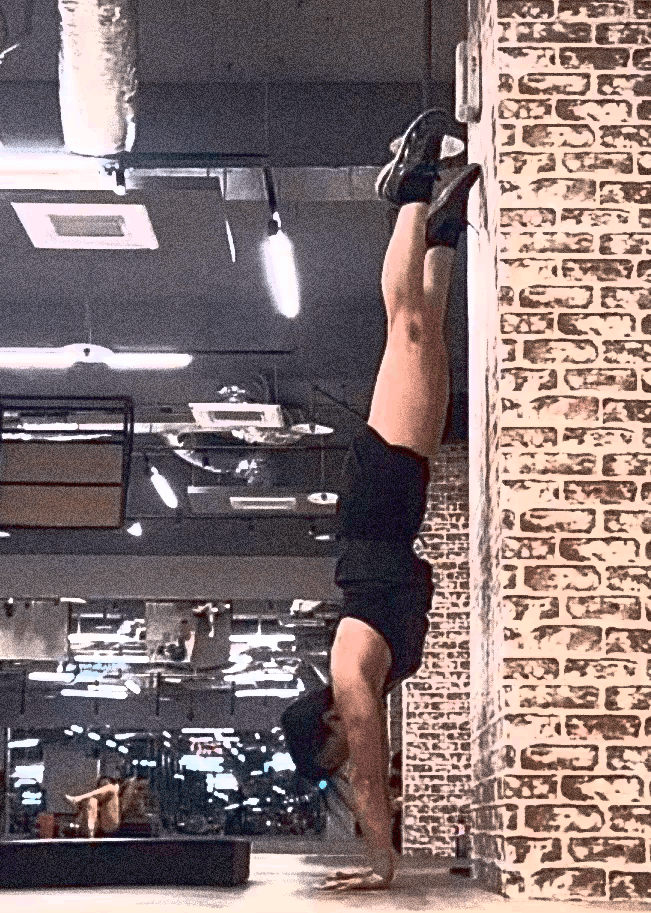At the beginning of July, I decided to commit to something I’d only dabbled in previously—practicing handstands consistently for an entire month.
I’d been intrigued by handstands for nearly two years, thanks to countless Instagram reels filling my feed. But curiosity alone hadn’t translated into real progress. It wasn’t until I consciously decided to dive deep into focused, structured practice with some helpful nudges from AI Bot that things finally started shifting.
Technical Discoveries
Over these 30 days, I gained more clarity about the technical elements:
- Kick-ups improved significantly. While I still can’t hold a free-standing handstand, my kick-ups facing away from the wall have become smoother and more controlled.
- Hollow body holds became essential. I realised the critical importance of this core activation. I’m still figuring out how to breathe naturally in this position, but awareness is a great first step.
- Scapula awareness emerged. Before July, I didn’t know what scapular elevation really meant. Now, even though I’m still working on achieving it, I’m at least aware of its role.
- Understanding hip position changed my kick-up strategy. Initially, bent-leg kick-ups felt impossible, but once I focused on moving my hips overhead, things started clicking.
- Crow pose consistency improved, highlighting how handstand training benefits other arm-balance skills.
Mindset Shifts: Learning to Show Up
Perhaps the biggest shift wasn’t physical at all, it was mental.
I also realised two deeper truths during this process:
- Trust the process, even when the change is subtle. Tiny shifts in awareness, like feeling your hips in space or noticing scapular movement, add up. Results don’t always scream; sometimes they whisper.
- Focusing on one thing means letting go of others, and that’s okay. I had to put other practices on pause. But I’m learning to trust that I can return to them when the time is right. No need to panic or cling to doing everything all at once.
I started July not truly believing I’d ever master a handstand. But instead of allowing doubt to stop me, I learned to coexist with uncertainty and practice anyway. Progress became less about immediate results and more about commitment and curiosity.
I realised my concept of success was skewed by social media perfectionism. Handstands are challenging, far fewer people can actually do them than Instagram would have us believe. Accepting that reality helped me appreciate my own progress and feel proud of the smaller wins.
Managing Energy and Real Life
Initially, I planned to practice every single day, but quickly realised it wasn’t sustainable physically or mentally. Shifting to about five focused sessions per week, complemented by lighter yoga classes, made all the difference.
My alignment improved noticeably, my overall fatigue decreased, and I even found myself motivated to go to the gym more consistently. However, intense handstand sessions meant sacrificing other forms of strength training, something I plan to balance better next month.
The Goal-Setting Dilemma
Setting goals proved tricky. Had I set a rigid goal like “achieve a 5-second freestanding handstand,” I’d have felt defeated by month-end. But not setting any goals felt aimless. The sweet spot turned out to be focusing on identity and intention:
“I’m someone who explores handstands seriously, not necessarily a pro, but a committed practitioner.”
This approach allowed me to celebrate showing up rather than obsessing over exact results.
I didn’t manifest a perfect handstand, but I manifested a different version of myself: one that shows up, experiments, and stops letting Instagram decide what ‘progress’ means.
What’s Next?
Moving forward, I want to keep my handstand practice fun, short, and sustainable, sessions capped at one hour, playful rather than pressure-filled.
But more than that, I want to share what this process gave me: a quiet kind of confidence that comes not from nailing the pose, but from becoming someone who shows up. Someone who keeps exploring, even without guarantees.
If you’re still stuck watching reels, doubting yourself, or starting over again and again—you’re not alone. I was there. And sometimes, all it takes is 30 days of focused practice to shift something deeper.
The handstand journey continues. So does the learning. So does becoming.

